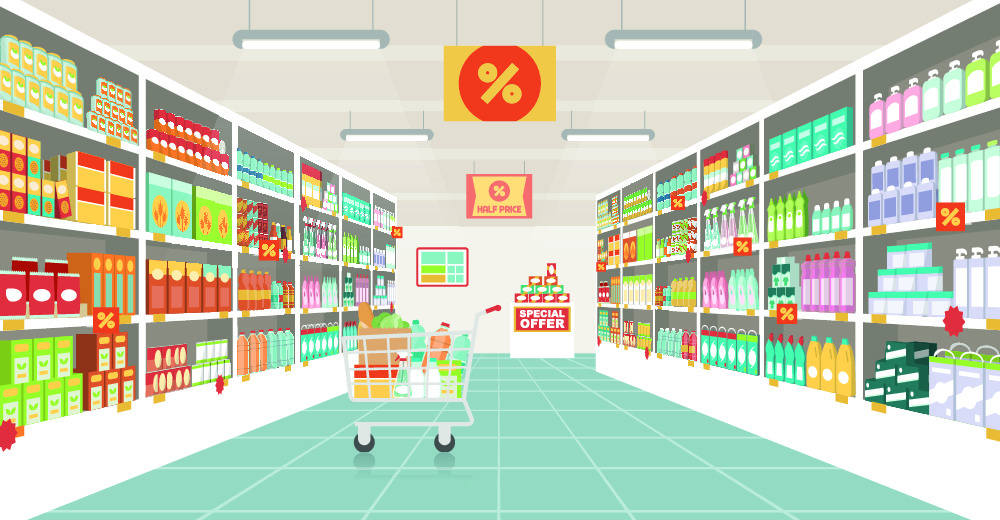- Design industry shaping loyalty programs
- Integrate easily and go live quicker
- Deliver hyper-personalized consumer experiences
Blue Rewards from Al Futtaim Group Shares Loyalty Success Stories and Evolution. Watch Podcast >
Capillary Announces 2nd Annual Captivate 2025 Summit: Transforming Loyalty Management with New AI Tech Read more >

Six months into the pandemic and the economic impact and fear from COVID-19 has brought striking shifts in consumer behavior, foreseeably for a long period. Globally, there is an accelerated rise in internet adoption, allowing users to stay connected and carry out essential daily tasks in trying times of social distancing. In the U.S., about nine-in-ten adults (93%)say that a major interruption to their internet service during the outbreak would be a problem in their daily life, including 49% who foresee an outage being a very big problem.
Brands continue their efforts to adapt to business disruptions and changing customer behavior. One example is the increasing number of brands offering cashlessand contactless delivery to customershence providing customer convenience and safety, and also adapting to the new consumer mindset. Life in the post-COVID world may look drastically different, yet customer experience has been crucial for promoting loyalty, retaining customers, encouraging brand advocacy, and that remains true during the pandemic. Pre-pandemic, customers were partial to brands that provided unique, personalized experiences—studies conducted have shown that customers increase their spending when they receive positive, personal shopping experiences.
The current demand for shopping experiences are those that limit physical touchpoints and interactions with other human beings. Self-service solutions powered by the likes of Artificial Intelligence, facial recognition, and infrared technology can make online and in-store experiences better for customers. Recent COVID-19 retail trends like BOPIS (buy-online pick-up in-store) and curbside pickup have gained in popularity. When compared to the previous year, orders placed online and picked up at stores in the month of April 2020 more than doubled,
In a bid to help brands strengthen their business in the COVID era, Capillary has added new features to our platform. Read on.
A new wave of digital platforms is emerging to offer multidimensional engagement and entertainment to users. Platforms like Instagram and TikTok may have once been viewed as those that cater to Gen-Z and young digital natives, but they have now exploded in popularity across all demographics, thanks in no small part to the COVID pandemic. In America, almost 50% of surveyed consumers have increased their social media use, according to eMarketer. In China, social apps are completely transforming the Ecommerce landscape, and Ecommerce is converging with livestreaming to quickly become the prefered shopping experience in Southeast Asia. For the uninitiated, Livestream Ecommerce involves brands and influencers leveraging livestreaming platforms to showcase products, try them, and rate the experience to viewers.
Taking into consideration the large consumer audience using social media platforms, Capillary now allows new or existing users to login to your Web store with their Facebook/ Twitter/ Google credentials. These settings can be enabled through the AnywhereCommerce+ dashboard.
Store2Door now supports a chatshop feature, which will allow customers to directly connect with their nearest store without the store staff initiating the conversation with the customer. To enable this, brands can share a Chatshop page on their social media sites (through Stories, Posts, or Promoted Posts). Customers can click on the link to learn all the stores they can connect with on Whatsapp. This allows customers to enquire about catalogs, ongoing promotion, and get their order placed.
Ecommerce websites offer consumers the convenience of viewing all available products in one place. However many customers become overwhelmed by the sheer volume of available choices online, and often lose patience after navigating a few pages of products.
By enabling Dynamic Listing within Capillary’s AnywhereCommerce+ platform, brands can list their products (or specific categories of products) according to dynamic factors like Product Popularity, or Inventory Volumes, Order Recency, Catalog Sequence, or even a combination of parameters.
It would be recommended for brands to set their default product listing based on popularity, and provide consumers the option to view products by pricing, or other factors. Partly due to the severe economic impact of COVID across the globe, 68 percent of consumers in April indicated they spent less because of the pandemic, up from 49 percent in March (a 39 percent increase); and 35 percent of consumers indicated they spent significantly less in April, compared to only 22 percent in March (a 59 percent increase).
Enabling dynamic listing allows customers to browse products based on their own shopping priorities, and receive recommendations of popular products in their specific category and price range, like they would with store staff assistance.
As consumers are getting conditioned to make purchases online, the growing trend of hyperlocal commerce facilitates faster delivery from the closest available store. With Capillary’s Anywhere Commerce platform, brands can enable rules to deliver orders from the closest store, or closest common store (for orders containing multiple products).
However, since many stores are also facing challenges regarding stock excess and shortages, brands can, alternatively, define rules to allocate an order automatically to a specific location/warehouse (for example, a rule stating that all electronic products must be delivered from a warehouse in Bangalore).
Brands can even modify their price list to define unique prices for products according to stores, or user groups, or order quantity, or specific date range, or even transaction channel. Product prices can vary for any one of these parameters or for a combination of parameters, allowing brands to incentivize customers to make purchases while keeping a check on expiring or excess inventory.
The global Coronavirus crisis has toppled global economies, and people across the world are apprehensive about their health, safety and financial security. Times like these call for brands to truly put customers’ priorities first. By putting your customers’ interests first and innovating your brand accordingly, this can be a time for your company’s brand to lead.

August 11, 2020 | 4 Min Read
Six months into the pandemic and the economic impact and fea

December 4, 2024 | 4 Min Read
As online grocery shopping is becoming more ingrained into o

November 13, 2018 | 4 Min Read
No matter where you look, there’s no avoiding news of the